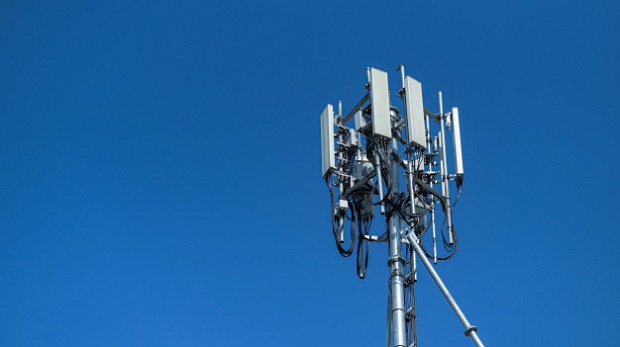August proved to be a banner month for Globe Telecom’s expansion plans as the company secured 190 permits from 85 local government units (LGU) from as far as Bangued in Northern Luzon and Butuan City in the Caraga Administrative Region in Northeastern Mindanao.

Of the 190 permits granted, 37 were given in record time by 17 local government units.
The company attributed the unexpected but quick pace of issuance of permits to more LGUs realizing the need for connectivity in the new normal and in compliance to the Joint Memorandum Circular (JMC) signed by the Department of Information and Communications Technology, Department of Interior and Local Government, Anti-Red Tape Authority, and other government agencies.
“With the implementation of the JMC we see that LGUs are actively working together with telcos to improve connectivity. Even the LGUs themselves are following up the status of our permits and how soon we can start the installation of cell towers in their respective municipalities and cities,” said Joel Agustin, Globe senior vice president for program delivery, network technical group.
The LGUs which granted Globe early permits include:
- Agoo, Bangued, Binalonan, Sto. Domingo and Vigan in Northern Luzon;
- San Pablo, Sto. Tomas, San Jose, Mendez, Rosario and Magdalena in Southern Tagalog;
- Las Pinas in Metro Manila;
- Angono and Teresa in Rizal;
- Victorias and Sta. Barbara in Visayas
- Butuan in Mindanao
Agustin revealed that additional permits were obtained to start the construction of cell sites in:
- Bauang in La Union;
- Sta. Lucia in Ilocos Sur;
- Bangued and Lagangilang in Abra;
- Lingayen, Binmaley, San Carlos, San Fabian, Pozorrubio, Urdaneta, San Jacinto, and Villasis in Pangasinan;
- Calamba, San Pedro and Santa Rosa in Laguna;
- Lipa, Lemery, Calatagan and Mabini in Batangas;
- Silang, Alfonso, Cavite City, Dasmarinas and Bacoor in Cavite;
- Pasig City, Manila, Quezon City, Valenzuela, Caloocan, San Juan and Pasay in Metro Manila;
- Bamban, Santa Ignacia, Tarlac City, Capas and Paniqui in Tarlac;
- Pulilan, Guiguinto, Meycauayan, Sta. Maria, Marilao and Malolos in Bulacan;
- Cabanatuan and Zaragoza in Nueva Ecija;
- Solano in Nueva Vizcaya;
- Apalit and Magalang in Pampanga;
- San Felipe in Zambales;
- Sto. Domingo in Albay;
- Candelaria in Quezon; and
- Antipolo City and Angono in Rizal.
The go-signal has also been secured in:
- Dumaguete City and San Jose in Negros Oriental;
- Roxas City in Capiz;
- Barotac Nuevo and Calinog in Iloilo;
- Babatngon in Leyte;
- Brookespoint and Puerto Princesa in Palawan;
- Kalibo and Tibiao in Panay; and
- Bogo and Cebu City in Cebu
A significant number of additional sites will also be installed in:
- Pagadian;
- Cagayan De Oro;
- Davao City;
- Datu Anggal Midtimbang, Maguindanao;
- Pikit in Cotabato;
- Tagoloan in Misamis Oriental; and
- Monkayo, Davao De Oro in Mindanao.
Globe’s network rollouts are boosted further after these LGUs removed the need for telcos to secure a permit from their respective Sanggunian Bayan:
- San Jose, Sto. Tomas, Lipa, Cuenca, Taal, Tanauan, Lobo, Mataas na Kahoy and Calaca in Batangas;
- Sta. Cruz, Los Banos and Cabuyao in Laguna;
- Mendez, Rosario, Noveleta, Carmona, Alfonso and General Trias in Cavite;
- Las Pinas in Metro Manila;
- Morong, Baras, Teresa, Tanay and Cardona in Rizal;
- Magalang, Pampanga;
- Bayombong, Nueva Vizcaya;
- Cabanatuan and Nampicuan in Nueva Ecija;
- Sta. Maria and San Mateo in Bulacan;
- San Jose, Tarlac;
- Cauayan, Luna, Cabatuan and Ilagan in Isabela; Dumaguete, Bacolod City and Mandaue in Visayas; and
- Maramag and Ozamis in Mindanao
At least 40 LGUs have already removed requirement from Sanggunian Bayan in their permitting process.
“The JMC’s aim to shorten the processing of requirements and construction of common towers in the country from the previous average of 200 days to only 16 days has really helped us and we expect more LGUs to support us because at the end of the day, they can best serve their constituents through connectivity and use of technology specially at this time that we are faced by limitations of health protocols and physical distancing,” Agustin added.




